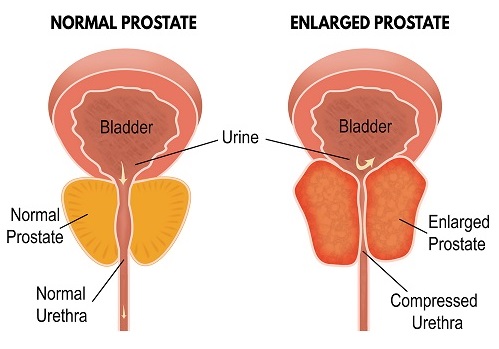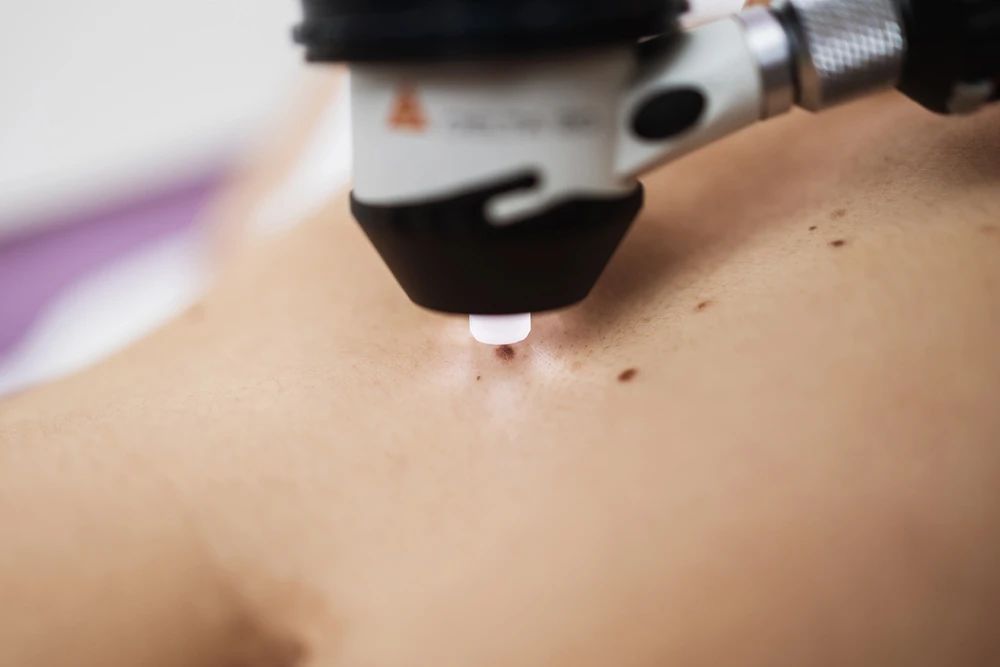Do You Have an Enlarged Prostate?
2021-12-02

Prostate enlargement, or Benign Prostatic Hyperplasia (BPH),
affects most men as they age and it could affect your quality of life if not
managed right.
However, did you know that for most men, their prostate
grows larger as they get older? It’s a part of ageing, but after a certain
point, the enlarged prostate leads to a condition called benign prostatic
hyperplasia (BPH).
It’s not the most well-known body part, but the prostate is
a walnut-sized gland found at the base of the bladder and surrounds part of the
urethra – the tube that channels urine and semen out of your penis. The
prostate is part of the male reproductive system and produces the seminal fluid
that a man ejaculates. As men grow older, the prostate grows in size; and as it
grows, it squeezes the urethra and causes a range of symptoms. Don’t panic
because BPH is a common condition, especially in older men, and thus, there are
plenty of treatment options for it.
What are the symptoms of an enlarged prostate?

As a man ages, the prostate grows larger and starts to pinch
the urethra which causes problems with your urine flow. Urinary symptoms
include:
- Weak urine stream
- Frequent urination
- Waking up at night to go to the bathroom, which affects quality of sleep
- Feeling like the bladder isn’t fully emptied
- Extra effort needed to start urine flow
- Incontinence or urine leakage
- Blood in the urine
Complications which could arise from unmanaged BPH include
blood in the urinary tract and urinary obstruction which may prevent urine from
being passed. This may lead to:
- Urinary tract infections
- Urinary stones
- Kidney damage
Such urinary symptoms may sometimes be due to diseases other
than BPH, such as infections, bladder stones and cancers of the prostate or
bladder. As such, urinary symptoms should not be regarded as a normal part of
growing older, and should be evaluated by a doctor to exclude more sinister
conditions.
How is BPH diagnosed?
To diagnose BPH, a urologist will perform a digital rectal
examination, DRE, where
the size and consistency of the prostate is determined. You will be asked to
fill up a questionnaire regarding your symptoms, called an International
Prostate Symptom Score or IPSS in short. This helps your doctor better
understand the severity of your symptoms.
The IPSS questionnaire will ask about the severity of symptoms such as:
- Incomplete emptying
- Frequency
- Intermittency
- Urgency
- Weak stream
- Straining
- Nocturia
It is advised that anyone with a score of more than 8/35
should see a urologist for an evaluation.
Your urologist will perform a urine test called a
Uroflowmetry test, to find out how fast urine is passed and how much urine is
left behind. Following that, an ultrasound is done to check the bladder to see
how well the bladder is emptied, as well as check the size of the prostate. A
blood test may also be required to check for kidney problems and assess the
risk of prostate cancer.
How is BPH treated?
Lifestyle changes
For men with mild symptoms, your doctor may recommend the following
lifestyle changes:
- Do exercises to strengthen the pelvic floor muscles for better urinary control
- Reduce the amount of fluids being consumed, especially before going out or bedtime
- Drink less coffee, tea and alcohol
Medication
For men with more significant symptoms, doctors may
prescribe medication. There are 2 main types of medication.
Alpha blockers – These have a quick acting effect on
relaxing the smooth muscles around the prostate and bladder neck, easing the
obstruction. These medications may cause dizziness as a side effect by lowering
your blood pressure. Other side effects include a blocked nose, or reduced
volume of ejaculation.
5-alpha reductase inhibitors (5-ARI’s) – These drugs stop
the prostate from growing and cause it to shrink. However, these medications
take a longer time to work, so patients will have to wait for as long as 6
months to a year until symptoms improve. They work best when combined with
alpha blockers, which can provide more immediate relief.
There are few side effects with 5-ARI’s, but they may reduce
your libido and weaken your erections. Unfortunately, these sides effects may
not always be reversible when you stop taking the medication.
While both classes of drugs are effective, they do need to
be taken on a long-term basis to treat BPH.
Surgery
If medication does not provide sufficient relief from
bothersome urinary symptoms, or if a patient cannot tolerate the side effects,
or does not want to rely on long-term BPH medication, there are many surgical
options available for a longstanding solution.
Recently, 3 new minimally invasive surgical treatments
(MIST) for BPH have become available in Singapore. These MIST have the
following advantages over the previous standard surgery of TURP (Transurethral
Resection of Prostate). Firstly, it helps preserve a patient’s preservation of
sexual function. Secondly, they do not require hospital admission, and general anesthesia/spinal anesthesia. Thirdly, they reduce the changes of
complications and allow patients to return to normal activity earlier.
What are the new MISTs for BPH?
Urolift
This procedure involves passing a small camera into the
urethra (cystoscope) and putting small permanent implants into the prostate.
These implants will lift, and hold, the obstructing prostate tissue apart,
increasing the width of the urethral passage. This reduces obstruction to the
urinary flow, improving the speed of the flow and reducing BPH symptoms.
Rezum Water Vapour Therapy
Rezum works by inserting sterile water vapor (steam)
through a cystoscope, into the prostate gland during a series of nine-second
treatments. The therapy is targeted to a defined area because steam will travel only between cells until it encounters natural barriers
within the prostate. When the steam comes into contact with the
prostate tissue, all the stored energy is released into the tissue. Over time,
the body absorbs the treated tissue, shrinking the prostate. With the extra
tissue removed, the urethra opens up, reducing BPH symptoms.
Prolieve
Prolieve is a catheter that is passed into the prostate part
of the urethra, and combines the use of focused Microwave Heating (to destroy
prostate tissue) together with a Pressurized Balloon (to push apart the
prostate tissue). This creates a wider passage in the prostate for urine to
flow through.
The treatment takes approximately 45 minutes, and can be
performed under local anesthesia.
All 3 MISTs can effectively relieve BPH symptoms while
preserving sexual function. Most men see improvement in their symptoms within a
few weeks and can return to regular activities within a few days after the
treatment.
However, there are selection criteria for these treatments.
The choice of MIST needs to be individualized, and carefully selected by the
treating urologist, based on the size and configuration of the patient’s
prostate.
Surgical options requiring hospital admission
Not all prostates can be treated by MIST. Very large
prostates or men who have complications from BPH such as urinary retention
(complete inability to pass urine), bladder stones, or blocked kidneys,
need surgery that can treat larger volumes of prostate tissue.
Transurethral resection of the prostate (TURP)
This is the most common surgical treatment for BPH, and
remains the standard upon which other surgical treatments are compared to.
In a TURP, the urologist inserts an instrument called a
resectoscope through the tip of your penis and into the urethra. The
resectoscope helps your doctor see and trim away excess prostate tissue that\'s
blocking urine flow. After which, a urinary catheter is inserted for 1 – 2
days. TURP is performed under general or spinal anesthesia, and a patient will
need to stay in the hospital for between 1 – 3 days.
Greenlight Laser Therapy
Greenlight laser therapy involves using a laser fiber through a cystoscope to heat up and vapourise obstructing prostate tissue. This
unblocks the urethra and restores normal urine flow from the bladder. This
procedure is performed under general or spinal anesthesia, and can be done as
a day surgery or with an overnight stay. Recovery is generally quick.
The advantage of Greenlight Laser over the TURP is that it
offers the doctor better control over bleeding. It is especially useful for men
who are on blood thinners for prevention of a heart attack or stroke.
Do note that Greenlight Laser Therapy and TURP may have side
effects that include retrograde ejaculation and erectile dysfunction.
What should you do?
If you find yourself displaying any of these symptoms,
consult a urologist and get yourself checked out. It is important to understand
that while these urinary symptoms are more common with ageing, they should not
be regarded as a normal part of life. Men should be evaluated to rule out more
sinister causes of urinary symptoms.
Men do not need to suffer from urinary symptoms of BPH.
There are many treatment options available, and a urologist can help men find a
suitable treatment option for their individual needs, and improve their quality
of life.
Article reviewed by Dr. Sanwei Guo, Urologist at ParkwayHealth
Copyright: Health Plus an online health and wellness web resource developed by Parkway Singapore https://www.mountelizabeth.com.sg/healthplus/article/benign-prostatic-hyperplasia
References:
(December 2018) What Is BPH? Retrieved on 5 November 2020
from https://www.webmd.com/men/prostate-enlargement-bph/what-is-bph#1
(July 2017) What Do You Want to Know About Enlarged Prostate? Retrieved on 29 October 2020 from https://www.healthline.com/health/enlarged-prostate
(May 2019) Benign Prostatic Hyperplasia (BPH). Retrieved on 29 October 2020 from https://www.urologyhealth.org/urology-a-z/b/benign-prostatic-hyperplasia-(bph)





























